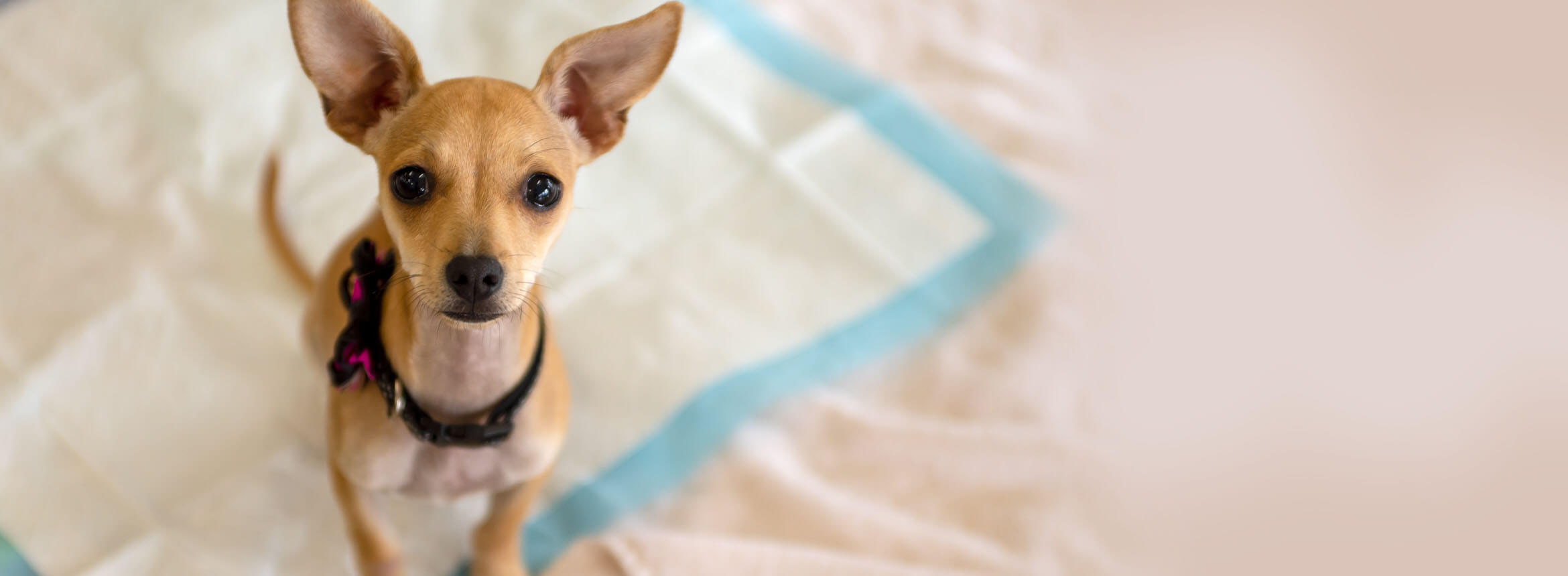Housebreaking a puppy is no walk in the park, but it doesn’t have to be a never-ending slog either. Generally, the more you can monitor your puppy each day, the faster and smoother the experience will be. Adopt these techniques to get your pal trained up while minimizing headaches (read: accidents).
Establish a Routine
Setting a schedule is vital for potty-training success, not to mention your sanity. Dogs like structure, so a precise daily routine teaches your pal when to do what. Fixed mealtimes are particularly important since pups need to go right after eating — if meals are on time, eliminations will be as well.
Every potty trip is an opportunity for learning, so take your pal out often. Rather than wait for signs that it’s time — at which point it could be too late — build your schedule around these markers:
- 5-10 minutes after eating
- After drinking
- Immediately after a nap
- After playing for 5-10 minutes (this can stimulate the digestive tract)
- After chewing on a bone or toy
- First thing in the morning
- Last thing at night
Yes, it’s a lot. Puppies up to seven weeks old require hourly potty trips. The good news is that the interval increases as they develop.
Track and Supervise
Tracking your puppy’s actions can put you on a fast track to the potty-training finish line. Half the battle with housebreaking is shuttling pups outside before they do their business inside. Log when your pal eats, drinks, sleeps, eliminates, and engages in stimulating activity, and patterns will reveal exactly when you should take your pup out. For example, you may find that following a meal, you can go 10 minutes later than expected. Or if your pal repeatedly has an accident around the same time, you’ll know to slot in an extra trip. As your furball grows and timing changes, use your data to modify the schedule.
Monitoring your puppy’s every move is also key. Fur babies can’t literally tell us when they need to go, so look out for common signs like sniffing, circling, whimpering, running to the door, wandering off, and zoomies. These are red alerts that it’s time to go outside stat. To stave off an accident en route to the door, carry your pup out, if possible.
Create Positive Associations
To reinforce housebreaking, show your puppy that eliminating outside is a positive experience. When it’s time for a potty trip, follow these steps:
- Take your pup to a designated area, which should remain the same.
- To limit distractions, stand with your pup in one spot (less to explore) and stay silent.
- As your pal gets ready to go, say a cue word like “bathroom” or “potty.” Your pup will come to associate it with eliminating and saying the word will speed up the process.
- Immediately after your dog does the deed, give praise, reward with a treat, or pet your pup’s head to create a positive association.
- To heighten the positive association, play with your puppy. If you skip this step and take your pup straight home to a crate or confined area, the association could turn negative, decreasing your pal’s motivation to become housebroken.
The final and most important piece of advice is to never punish your puppy if (er, when) there’s an accident indoors. If you catch it happening, make a noise to get your pup’s attention, which will pause the act. Take your puppy outside to finish, then give lots of praise. If you only catch the aftermath of an accident, simply clean it up and monitor your pal more closely. Make sure the odor is 100% gone so your pup doesn’t return to that spot to eliminate.
Remember to always approach potty training from a place of love. It’s not as easy when an expensive rug has been damaged, but being gentle and patient with your fur baby is the only way to build trust and a lifetime of love.

